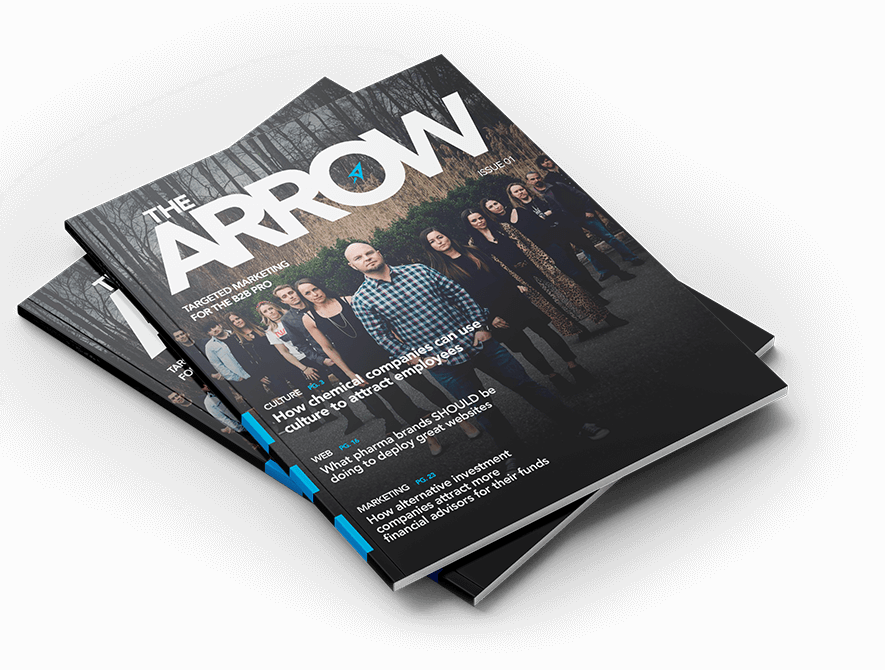Emerging Trends for local B2B Video Marketing in 2025
Chris Mulvaney is the CEO of CMDS. I make things... I’m the creative entrepreneur with passion for (re)making brands and inventing solutions to problems no one knows exist.
As technology evolves, video marketing continues to dominate the digital landscape. For B2B companies, the medium is more than a powerful tool—it’s a necessity. But staying ahead in the competitive world of digital marketing requires more than just producing high-quality videos. It demands an understanding of emerging trends that are shaping the way businesses connect with their audiences.
Looking ahead to 2025, innovations like AI-driven personalization, 360-degree videos, and interactive video formats are revolutionizing how B2B brands engage, educate, and convert. Let’s explore these game-changing trends and how they can elevate your video marketing strategy to new heights.
AI-Driven Personalization: The Power of Relevance
In the B2B space, relevance is everything. AI-powered tools are making it easier than ever to create personalized video experiences that speak directly to your audience’s unique needs and interests. Imagine a prospect receiving a product demo tailored specifically to their industry or a video case study featuring companies similar to theirs. AI makes this possible.
Through data analysis, AI can segment your audience and generate dynamic content that feels personal. For instance, AI can automatically insert a prospect’s name or company logo into a video, creating a more engaging experience. It can even recommend videos based on a viewer’s previous interactions with your content.
Why It Matters:
Personalization builds trust and fosters stronger connections. B2B buyers, often overwhelmed by generic marketing, are more likely to engage with content that feels tailored to their specific challenges. AI makes scaling this personalization not only possible but seamless.
360-Degree Videos: Immersive Experiences That Inspire Confidence
B2B buyers crave transparency. They want to see products, processes, or environments in detail before making decisions. Enter 360-degree videos, which provide an interactive, immersive experience that traditional videos simply can’t match.
Picture this: A potential client virtually tours your manufacturing facility or explores your software interface in a 360-degree view. This level of interactivity allows prospects to engage with your brand on their own terms, building confidence and credibility.
Applications:
- Showcasing physical products or facilities.
- Providing virtual walkthroughs of events or conferences.
- Offering a detailed look at complex processes.
Why It Matters:
Transparency is critical in B2B marketing. 360-degree videos give prospects the sense of control they value, while showcasing your business’s commitment to openness and innovation.
Interactive Video Formats: Engagement That Converts
Interactive videos are redefining engagement in digital marketing. Unlike traditional linear videos, these formats invite viewers to participate—whether by clicking, answering questions, or navigating through customized pathways. This trend is particularly impactful for B2B, where buyers often have diverse needs and questions.
Examples of Interactive Video Features:
- Branching Paths: Let viewers choose the content they want to explore, such as specific use cases or industries.
- Clickable CTAs: Add calls to action directly within the video to drive immediate conversions.
- Quizzes and Forms: Gather insights about your audience while keeping them engaged.
For example, an interactive product demo could allow viewers to select the features most relevant to their business, creating a customized experience. This not only improves engagement but also provides valuable data for your sales team.
Why It Matters:
Interactive videos turn passive viewers into active participants. By involving your audience, you’re creating a deeper connection that leads to higher retention and stronger conversions.
Short-Form Videos: Capturing Attention in Seconds
As attention spans continue to shrink, short-form videos are becoming increasingly vital. Platforms like LinkedIn, Instagram, and TikTok have conditioned audiences to consume bite-sized content. While these platforms may seem more B2C-focused, their influence is growing in the B2B world.
Short-form videos are perfect for teasers, quick tips, or highlighting key benefits of your products. For example, a 30-second video showcasing the top features of your software can grab attention and entice viewers to learn more.
Why It Matters:
Short-form videos are highly shareable and accessible. They’re ideal for busy B2B professionals who want valuable insights without committing to longer content.
Advanced Analytics: Measuring Success with Precision
Metrics have always been essential to video marketing, but emerging tools are providing deeper insights than ever before. Advanced analytics platforms now offer real-time data on viewer engagement, drop-off points, and conversion paths.
With these tools, you can measure the ROI of individual videos, identify areas for improvement, and refine your strategy. For instance, if data shows that viewers consistently drop off after the first 10 seconds, you can optimize your intros to be more engaging.
Why It Matters:
In a data-driven world, precise analytics empower B2B marketers to make informed decisions. Understanding what works—and what doesn’t—ensures your video marketing efforts are always improving.
Sustainable Video Practices: Meeting Evolving Expectations
Sustainability is no longer just a buzzword—it’s an expectation. As businesses and consumers alike demand environmentally conscious practices, adopting sustainable video production methods can set your brand apart.
This might include minimizing travel by using virtual sets, reducing energy consumption during production, or leveraging AI to streamline editing processes. Highlighting your commitment to sustainability in your videos can also resonate with eco-conscious buyers.
Why It Matters:
Sustainability aligns with broader corporate social responsibility initiatives, appealing to clients who prioritize working with ethical, forward-thinking partners.
How to Stay Ahead
Embracing these trends requires adaptability and a forward-thinking mindset. Here’s how to ensure your video marketing strategy evolves alongside these innovations:
- Experiment with New Formats: Try incorporating AI, 360-degree, or interactive elements into your existing video campaigns.
- Focus on Storytelling: Regardless of the trend, compelling storytelling remains the backbone of successful video marketing.
- Collaborate with Experts: Partner with professionals who understand these technologies and can help you implement them effectively.
- Monitor Industry Trends: Stay informed about emerging tools and platforms to keep your strategy fresh and competitive.
Conclusion: The Future of B2B Video Marketing
The future of B2B video marketing is exciting, innovative, and full of opportunities. Trends like AI-driven personalization, 360-degree videos, and interactive formats are transforming how businesses engage with their audiences. By staying ahead of these trends, you can build deeper connections, enhance your brand’s credibility, and drive results that matter.
Don’t wait until 2025 to adapt. Start exploring these innovations now and position your business as a leader in the evolving world of digital marketing. The time to innovate is now.
Contact us today to learn how to create campaigns that effectively balance emotional appeal with other key factors for success. Remember, B2B marketing isn’t just about emotion—it’s about creating a connection that drives results.






